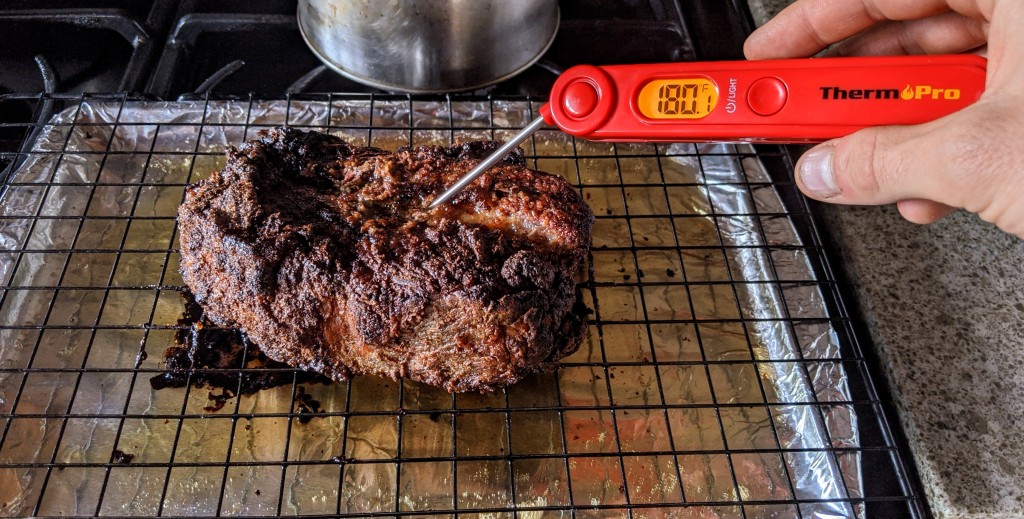Where to Put a Meat Thermometer in Spatchcock Turkey for Perfect BBQ
Written By James Morgan
Cooking spatchcock turkey is a technique that barbecue enthusiasts swear by for its even cooking and richly flavorful results. However, ensuring your turkey is cooked to perfection requires accurate temperature measurements. The key question is: where to put the meat thermometer in spatchcock turkey? Whether you are a seasoned pitmaster or a budding grill aficionado, knowing the right spot for your thermometer can make all the difference.

The Importance of Using a Meat Thermometer
Using a meat thermometer is essential for a couple of reasons. Firstly, it ensures that the turkey is cooked to a safe temperature, reducing the risk of foodborne illness. Secondly, it helps you avoid overcooking, which can lead to dry, tough meat. Accurate temperature measurement is particularly crucial when youre dealing with a spatchcock turkey.
Why Spatchcock?
Spatchcocking, or butterflying the turkey, involves removing the backbone so the bird can be flattened out. This method allows for faster and more even cooking, and it provides more surface area for that smoky flavor to penetrate. However, the unique shape of the spatchcocked turkey can present some challenges when it comes to temperature monitoring.
:max_bytes(150000):strip_icc()/faw-meat-thermometers-test-thermoworks-chefalarm-rkilgore-19-f1a0c722c7b64683814f4c76104c449c.jpeg)
Where to Put the Meat Thermometer
The best place to insert the meat thermometer in a spatchcock turkey is into the thickest part of the breast. For accurate reading, ensure the probe is not touching any bone, as this can alter the temperature readings. Here are some steps to follow:
- Position the Thermometer: Insert the thermometer into the thickest part of the breast, making sure it's deep enough to get a good reading.
- Avoid the Bone: Make sure the probe is not touching any bones, as bone temperature can be higher than the meat temperature, giving you a false reading.
- Monitor Regularly: Keep an eye on the thermometer as the turkey cooks to ensure it reaches a safe internal temperature of 165F.
For more information, check out this article on how to use a meat thermometer.
Why the Breast?
The breast is the thickest and most substantial part of the turkey. It takes the longest to cook, so ensuring it reaches the right temperature guarantees the rest of the bird is also cooked. Moreover, the breast is the most susceptible to drying out, so monitoring it closely can help you achieve a juicy and flavorful result.

Common Mistakes to Avoid
Even experienced grillers can make some common mistakes when measuring the temperature of a spatchcock turkey. Here are a few pitfalls to avoid:
Inserting in the Wrong Location
Inserting the thermometer in the wrong spot, such as too close to a bone or in a thinner part of the meat, can lead to inaccurate temperature readings. Always aim for the thickest part of the breast for the most accurate results.
Not Checking Often Enough
With the relatively quick cooking time of a spatchcocked turkey, you need to check the temperature regularly to prevent overcooking. It's a good idea to start checking 30 minutes before the estimated cooking time is up.
For more tips on avoiding these common pitfalls, check this guide on how to use a meat thermometer for steak.

Additional Tips for BBQ Success
Achieving the perfect spatchcock turkey on the grill involves more than just proper thermometer placement. Here are some additional tips:
Season Generously
Don't skimp on the seasoning. A spatchcock turkey provides more surface area, making it perfect for absorbing rubs, marinades, and smoke. Be generous with your seasoning to enhance the flavor.
Manage Your Grill Temperature
Maintaining a consistent grill temperature is crucial for even cooking. Aim for a steady temperature of around 300-350F for spatchcock turkey. Be sure to monitor the grill temperature throughout the cooking process.
For more detailed steps, you can check out this article on how to clean your meat thermometer.
FAQs
How do I know when my spatchcock turkey is done?
The turkey is done when the internal temperature reaches 165F in the thickest part of the breast.
Can I use an instant-read thermometer?
Yes, an instant-read thermometer is a great tool for checking the temperature of your spatchcock turkey quickly and accurately.
What if I don't have a meat thermometer?
While not as accurate, you can check for doneness by cutting into the thickest part of the breast and ensuring the juices run clear. However, using a meat thermometer is highly recommended for safety and accuracy. For alternative methods, check this article on how to check meat temperature without a thermometer.
As an Amazon Associate, I earn from qualifying purchases.



